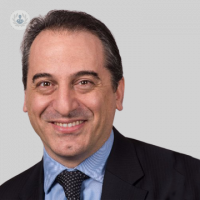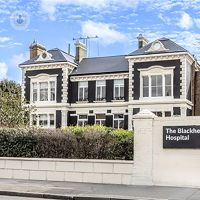Type 2 diabetes is a condition where a person has a high blood sugar level, and is often associated with obesity, and is more common as people get older. There are a number of surgical options that can be used to lose weight that have a direct effect on how the body uses insulin, and improves blood sugar levels, making the diabetes much more manageable.

What are the different types of diabetes surgery?
There are a number of surgical options to treat diabetes which can help you to manage your diabetes. These surgical options were originally only used as a solution to excessive obesity, as they cause weight loss in the patient. More recent studies have found that this surgery, known as bariatric surgery, has not only led to a loss of weight, but also that insulin and blood sugar levels become more normalised following surgery.
The types of bariatric surgery available that have been shown to improve blood sugar levels are:
A procedure where the stomach is made smaller, and food bypasses parts of the small intestine, giving the patient the sensation of feeling full quicker.
Surgery where an adjustable band is placed around the top of the stomach, creating a pouch which holds less food and causes the patient to feel fuller quicker. The less food held in the stomach, the easier it is to lose weight.
A large section of the stomach is effectively stapled closed, which causes the stomach to reduce in size, again causing the patient to feel fuller quicker, and therefore reduce their intake of food.
This is a two-step procedure where a pouch a quarter of the size of the stomach is initially created using staples, as with the gastric sleeve, the remaining part of the stomach is then removed. The small intestine will then be joined to the end of the pouch, closer to the large intestine than before. This then causes food absorption to be greatly reduced, and weight loss becoming easier following the procedure.
What are the benefits of diabetes surgery?
Surgery is not fully recognised as a standard option for the treatment of diabetes, however it is increasingly being chosen as the most suitable option, especially in patients where changes to lifestyle and diet, and in cases where diabetes medication hasn’t sufficiently controlled diabetes and blood sugar levels.
The benefits of this type of surgery are that positive results are almost guaranteed, and much more instantaneous than with lifestyle and diet management, with medication. Once the weight has initially been lost in the patient, it becomes much easier to manage the weight afterwards, and therefore the blood sugar levels become more manageable.
What are the risks of diabetes surgery?
Surgery to treat diabetes carries the usual risk of complications that any form of surgery carry, namely risk of infection, but the surgery is commonly performed and is a standard procedure. Outside of the surgical procedure, there are risks of nutritional deficiencies as a result of the stomach not having the capacity to take in as many nutrients. These can be managed with nutritional supplementation.
05-21-2013 07-24-2023Diabetes surgery
Professor Francesco Rubino - Surgery
Created on: 05-21-2013
Updated on: 07-24-2023
Edited by: Conor Lynch
Type 2 diabetes is a condition where a person has a high blood sugar level, and is often associated with obesity, and is more common as people get older. There are a number of surgical options that can be used to lose weight that have a direct effect on how the body uses insulin, and improves blood sugar levels, making the diabetes much more manageable.

What are the different types of diabetes surgery?
There are a number of surgical options to treat diabetes which can help you to manage your diabetes. These surgical options were originally only used as a solution to excessive obesity, as they cause weight loss in the patient. More recent studies have found that this surgery, known as bariatric surgery, has not only led to a loss of weight, but also that insulin and blood sugar levels become more normalised following surgery.
The types of bariatric surgery available that have been shown to improve blood sugar levels are:
A procedure where the stomach is made smaller, and food bypasses parts of the small intestine, giving the patient the sensation of feeling full quicker.
Surgery where an adjustable band is placed around the top of the stomach, creating a pouch which holds less food and causes the patient to feel fuller quicker. The less food held in the stomach, the easier it is to lose weight.
A large section of the stomach is effectively stapled closed, which causes the stomach to reduce in size, again causing the patient to feel fuller quicker, and therefore reduce their intake of food.
This is a two-step procedure where a pouch a quarter of the size of the stomach is initially created using staples, as with the gastric sleeve, the remaining part of the stomach is then removed. The small intestine will then be joined to the end of the pouch, closer to the large intestine than before. This then causes food absorption to be greatly reduced, and weight loss becoming easier following the procedure.
What are the benefits of diabetes surgery?
Surgery is not fully recognised as a standard option for the treatment of diabetes, however it is increasingly being chosen as the most suitable option, especially in patients where changes to lifestyle and diet, and in cases where diabetes medication hasn’t sufficiently controlled diabetes and blood sugar levels.
The benefits of this type of surgery are that positive results are almost guaranteed, and much more instantaneous than with lifestyle and diet management, with medication. Once the weight has initially been lost in the patient, it becomes much easier to manage the weight afterwards, and therefore the blood sugar levels become more manageable.
What are the risks of diabetes surgery?
Surgery to treat diabetes carries the usual risk of complications that any form of surgery carry, namely risk of infection, but the surgery is commonly performed and is a standard procedure. Outside of the surgical procedure, there are risks of nutritional deficiencies as a result of the stomach not having the capacity to take in as many nutrients. These can be managed with nutritional supplementation.


Why should someone with diabetes consider weight-loss surgery?
By Mr Ali Alhamdani
2024-11-19
Mr Ali Alhamdani, a leading bariatric surgeon, discusses the use of weight-loss surgery in treating both morbid obesity and type II diabetes. See more


Weight loss surgery to reverse type 2 diabetes: how does it work?
By Professor Sanjay Purkayastha
2024-11-19
If you live with type 2 diabetes, weight loss surgery can help to put your condition into remission. We spoke to one of London's top bariatric surgeons Mr Sanjay Purkayastha about the bariatric surgical options and what lifestyle changes you will need to make postoperation to ensure a happy and healthy life. See more


A cure for diabetes - how weightloss surgery leads to a remission of type 2 diabetes
By Mr Ahmed R. Ahmed
2024-11-14
Leading consultant bariatric surgeon, Mr Ahmed R. Ahmed explains how recent discoveries have found that type 2 diabetes can be effectively cured in some patients by undergoing surgery. See more


Can metabolic surgery cure diabetes?
By Professor Francesco Rubino
2024-11-03
Professor Francisco Rubino, a pioneer in the field of metabolic weight loss, with many years experience in Europe and the US, explains how bariatric surgery was developed and how it can help diabetic patients nowadays. See more
Experts in Diabetes surgery
-
Professor Francesco Rubino
SurgeryExpert in:
- Gastric sleeve
- Diabetes surgery
- Bariatric surgery
- Obesity
- Gastric bypass
- Gastric band
-
Mr Ahmed R. Ahmed
SurgeryExpert in:
- Bariatric surgery
- Hernia
- Gallbladder surgery
- Acid reflux
- Diabetes surgery
- Weight loss
-
Mr David Exon
SurgeryExpert in:
- Acid reflux
- Bariatric surgery
- Gallbladder surgery
- Hiatal hernia
- Upper GI surgery
- Diabetes surgery
-
Mr Sasindran Ramar
SurgeryExpert in:
- Bariatric surgery
- Diabetes surgery
- Gastric bypass
- Gastric sleeve
- Gallbladder surgery
- Hiatal hernia surgery
- See all

The Blackheath Hospital - part of Circle Health Group
The Blackheath Hospital - part of Circle Health Group
40-42 Lee Terrace, Blackheath, London SE3 9UD
No existe teléfono en el centro.
By using the telephone number provided by TOP DOCTORS, you automatically agree to let us use your phone number for statistical and commercial purposes. For further information, read our Privacy Policy
Top Doctors

Chelsfield Park Hospital - part of Circle Health Group
Chelsfield Park Hospital - part of Circle Health Group
Bucks Cross Rd, Chelsfield, Orpington BR6 7RG
No existe teléfono en el centro.
By using the telephone number provided by TOP DOCTORS, you automatically agree to let us use your phone number for statistical and commercial purposes. For further information, read our Privacy Policy
Top Doctors

London Bridge Hospital - part of HCA Healthcare
London Bridge Hospital - part of HCA Healthcare
27 Tooley St
No existe teléfono en el centro.
By using the telephone number provided by TOP DOCTORS, you automatically agree to let us use your phone number for statistical and commercial purposes. For further information, read our Privacy Policy
Top Doctors
-
The Blackheath Hospital - part of Circle Health Group
40-42 Lee Terrace, Blackheath, London SE3 9UD, East LondonExpert in:
- Vascular Surgery
- Cardiology
- Bariatric Surgery
- Colorectal surgery
- Endocrine Surgery
- General Surgery
-
Chelsfield Park Hospital - part of Circle Health Group
Bucks Cross Rd, Chelsfield, Orpington BR6 7RG, OrpingtonExpert in:
- Vascular Surgery
- Cardiology
- Colorectal surgery
- General Surgery
- Maxillofacial Surgery
- Orthopaedic surgery
-
London Bridge Hospital - part of HCA Healthcare
27 Tooley St, Central LondonExpert in:
- 24-hour service
- Cardiology
- Minimal access surgery (keyhole surgery)
- Orthopaedic surgery
- Cardiovascular disease
- Gastroenterology
- See all
- Most viewed diseases, medical tests, and treatments
- Weight loss injections
- Nipple discharge
- Abdominal pain
- Endovenous laser treatment (EVLA)
- Minimal access surgery (keyhole surgery)
- Head and neck cancer
- Neck lump
- Bariatric surgery
- Acellular dermal matrix (ADM)
- Prepectoral breast reconstruction






